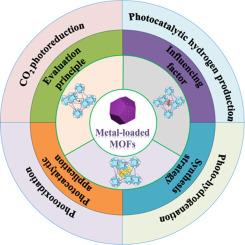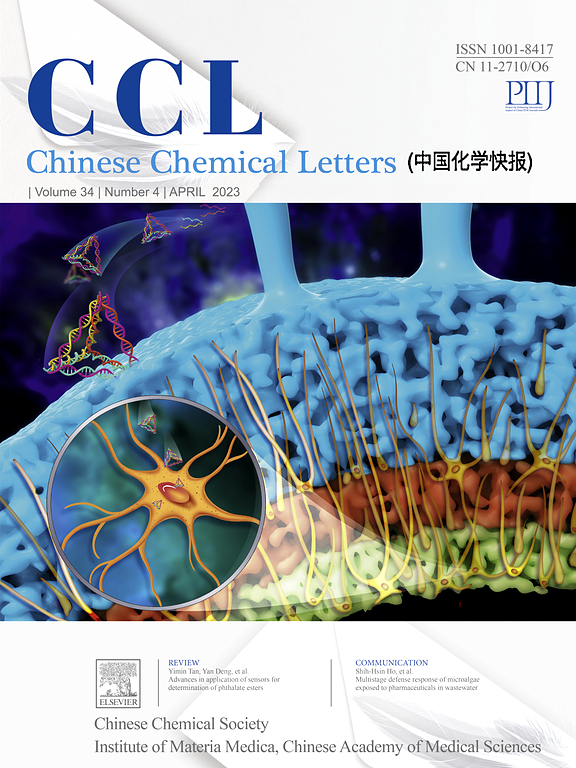Recent advances in metal-loaded MOFs photocatalysts: From single atom, cluster to nanoparticle
IF 9.4
1区 化学
Q1 CHEMISTRY, MULTIDISCIPLINARY
引用次数: 0
Abstract
Photocatalysis is widely regarded as a highly promising sustainable technique for addressing the challenges posed by environmental pollution and energy provision. In recent years, metal-loaded MOFs has become a rising star within the domain of photocatalysis due to its high specific surface area and porosity, adjustable structure, diverse and abundant catalytic components, which has exhibited excellent photocatalytic activity and exhibit great potential in a range of disciplines. In this paper, the principles for evaluating the photocatalytic performance of MOFs-based materials were firstly introduced, and some typical examples were also listed accordingly. Along with this, particular emphasis is paid to the main factors affecting the photocatalytic performance of metal-loaded MOFs. Then the synthesis and design strategies of MOFs loaded metal entities of varying sizes (single atoms, nanoclusters, and nanoparticles), and their applications in photocatalytic CO2 reduction, hydrogen production, photooxidation and photocatalytic hydrogenation were summarized and discussed. Finally, the opportunities and challenges faced in this kind of MOFs-based composites were analyzed from different perspectives. This report is expected to help researchers design and develop high-performance MOFs-based photocatalytic materials.

金属负载 MOFs 光催化剂的最新进展:从单个原子、团簇到纳米粒子
光催化被广泛认为是一种极具前景的可持续技术,可用于应对环境污染和能源供应带来的挑战。近年来,金属负载 MOFs 因其高比表面积和孔隙率、可调节的结构、多样而丰富的催化成分,成为光催化领域的后起之秀,表现出优异的光催化活性,在一系列学科领域展现出巨大的潜力。本文首先介绍了 MOFs 基材料光催化性能的评价原则,并列举了一些典型实例。同时,还特别强调了影响金属负载 MOFs 光催化性能的主要因素。然后,总结并讨论了负载不同大小金属实体(单原子、纳米团簇和纳米颗粒)的 MOFs 的合成和设计策略,以及它们在光催化还原二氧化碳、制氢、光氧化和光催化加氢中的应用。最后,从不同角度分析了这类基于 MOFs 的复合材料所面临的机遇和挑战。本报告有望帮助研究人员设计和开发基于 MOFs 的高性能光催化材料。
本文章由计算机程序翻译,如有差异,请以英文原文为准。
求助全文
约1分钟内获得全文
求助全文
来源期刊

Chinese Chemical Letters
化学-化学综合
CiteScore
14.10
自引率
15.40%
发文量
8969
审稿时长
1.6 months
期刊介绍:
Chinese Chemical Letters (CCL) (ISSN 1001-8417) was founded in July 1990. The journal publishes preliminary accounts in the whole field of chemistry, including inorganic chemistry, organic chemistry, analytical chemistry, physical chemistry, polymer chemistry, applied chemistry, etc.Chinese Chemical Letters does not accept articles previously published or scheduled to be published. To verify originality, your article may be checked by the originality detection service CrossCheck.
 求助内容:
求助内容: 应助结果提醒方式:
应助结果提醒方式:


